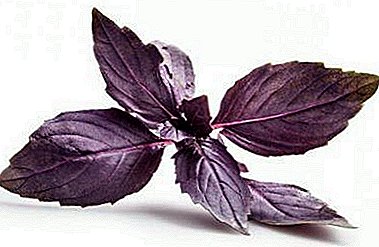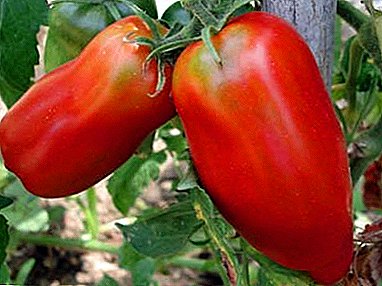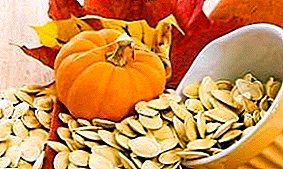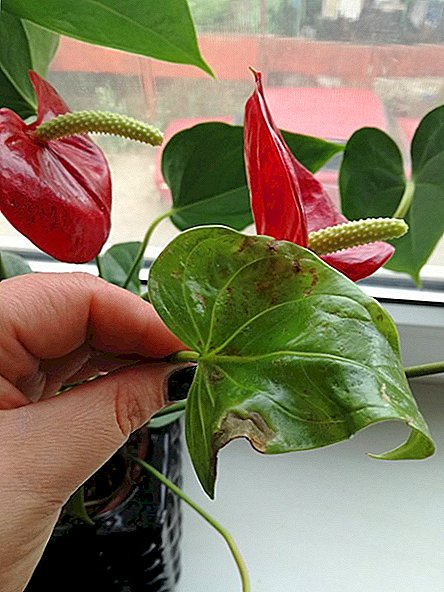 Adenium (or desert rose, as this plant is also called) hails from Yemen, although it is common in Oman, Saudi Arabia, and Central and South Africa. The growth of adenium in nature involves two stages: the period of active growth and vegetation and the period of rest, which is associated with natural conditions. In room conditions, this feature is preserved. Adenium is represented by a small tree with a thick trunk with a seal at the base, which is called caudex. Of particular value are the decorative leaves and flowers of adenium.
Adenium (or desert rose, as this plant is also called) hails from Yemen, although it is common in Oman, Saudi Arabia, and Central and South Africa. The growth of adenium in nature involves two stages: the period of active growth and vegetation and the period of rest, which is associated with natural conditions. In room conditions, this feature is preserved. Adenium is represented by a small tree with a thick trunk with a seal at the base, which is called caudex. Of particular value are the decorative leaves and flowers of adenium.
Did you know? Now in nature there are 10 known species of adenium, all the rest - subspecies and varieties. Although the views of flower growers differ on this issue, and some suggest recognizing a plant as monotypic.
Adenium Arabic (Adenium Arabicum)
Adenium arabicum is most widely distributed in western Saudi Arabia and Yemen. And therefore, flower growers distinguish two subspecies of Adenium Arabicum - Saudi and Yemen. The main difference between these two subspecies is the height and behavior of the plant during the resting period. Representatives of the Saudi cultivar can reach a height of 4 meters and retain the leaves throughout the year, while Yemeni adenium in the winter time drops all the leaves. As for the size of the branches, here, despite the lower trunk, Yemeni Adenium is superior to Saudi. The diameter of the branch of the Saudi subspecies is 4 cm, while in Yemen - 8.5 cm.  Blooms Adenium Arabic pink, sometimes white. However, its popularity reached the plant thanks to a large caudex. The leaves of the plant are pointed and can be up to 15 cm in size, in which case the arabicum can compete with Boehmianum, which until recently was considered the largest leaf. Nonhybrid arabicusam is characterized by leaves pubescence, which is manifested already at an early age.
Blooms Adenium Arabic pink, sometimes white. However, its popularity reached the plant thanks to a large caudex. The leaves of the plant are pointed and can be up to 15 cm in size, in which case the arabicum can compete with Boehmianum, which until recently was considered the largest leaf. Nonhybrid arabicusam is characterized by leaves pubescence, which is manifested already at an early age.
Important! Most often, it is adenium arabicum and hybrids derived from it that become the “base” for decorative plants like bonsai.Now, breeders have brought a huge number of different varieties of adenium, which differ in size and even the color of caudexes. Another distinctive feature is that arabicum hybrids bloom more abundantly.
Adenium Boehmianum (Adenium Boehmianum)
Adenium bohmianum - a plant native to Angola, widespread in Northern Namibia. Under natural conditions, shrubs can reach 3 m in height, caudex small. The leaves of the pale green color of an elongated heart-shaped form can reach a size of 15 cm. The vegetation period of the Bohmanianum does not differ in duration: only three months a year the shrub is covered with leaves, regardless of the conditions of the plant. Flowering occurs in the same period as the growing season. The flowers are a delicate pink color with a heart of a more saturated shade of pink in shape resemble a circle. 
This species is not very popular among breeders, because it grows for a long time. Most often, this species does not grow in width, but in height, which makes it even less popular for cultivation.
Did you know? Adenium juice Bohmmannuma used in the tribes of Namibia for the manufacture of poisonous arrows.
Adenium Crispum
Adenium Crispum is most widely spread in Somalia, Tanzania and Kenya. Adenium Crispum is considered as a subspecies of Somali Adenium, however, these two plants are fundamentally different from each other. Adenium Crispum has a unique caudex, which resembles a turnip. Thin roots grow from the lower part of the trunk, which is located underground, while thicker roots grow on the basis of the ground trunk. Crispum stems are not very thick and can reach 30 cm in height.  Crispum is characterized by slow growth under cultivation conditions, and it is possible to grow a plant with distinctive features from Somali only after 5 years, although the caudex will remain medium-sized for several more years. Differences between Crispum and Somali also appear when adenium Crispum blooms. Crispum flowers have a wider neck, but smaller petals. Petals of flowers are painted in pink and white and can often be curved down. In some varieties, the petals can be saturated red. Home-grown adenium from seeds blooms when it reaches a height of 15 cm, which usually happens in the second year of development.
Crispum is characterized by slow growth under cultivation conditions, and it is possible to grow a plant with distinctive features from Somali only after 5 years, although the caudex will remain medium-sized for several more years. Differences between Crispum and Somali also appear when adenium Crispum blooms. Crispum flowers have a wider neck, but smaller petals. Petals of flowers are painted in pink and white and can often be curved down. In some varieties, the petals can be saturated red. Home-grown adenium from seeds blooms when it reaches a height of 15 cm, which usually happens in the second year of development.
Important! From English, the name "crisped" translates as "curled, twisted" - another distinctive feature of crispum, because its leaves are wrapped in a "wave" along the edges.
Adenium Multiflorum (Adenium Multiflorum)
Adenium multiflora, or Adenium multiflorum is most widely distributed in the provinces of South Africa (KwaZulu-Natal, Mpumalanga, Limpopo), in Swaziland, Mozambique, Zimbabwe, Malawi and Zambia. Adenium multiflorum caused disputes between flower growers, because for some time it was considered a variety of Adenium Obesum, but then it was discovered that these species have enough differences to distinguish them. Multiflorum grows as a small shrub, and in some cases can grow a tree up to 3 m high. Caudex is pronounced in a young plant, and the stems of a gray-brown color grow from the underground rhizome. The fatter the stalk becomes, the less noticeable the caudex will be.  Multiflorum is growing fairly quickly, but the first flowering can be achieved only in the fourth or fifth year of development. In winter, the plant "hibernates" and sheds leaves. From the rest period the plant leaves after 4 months.
Multiflorum is growing fairly quickly, but the first flowering can be achieved only in the fourth or fifth year of development. In winter, the plant "hibernates" and sheds leaves. From the rest period the plant leaves after 4 months.
The size of the flowers of this species is about 6-7 cm in diameter. A bloom - the most abundant among all species. The leaves of adenium are rather large and wide.
Did you know? In order for the plant to please you with its abundant flowering, it needs to provide special conditions during the rest period - dryness and coolness.
Adenium Oliefolium (Adenium Oliefolium)
The name of this species was due to the composition of the leaves: they contain a large amount of oil. Widely distributed in Botswana, eastern Namibia and the northern part of South Africa. This species is considered to be the smallest (underground caudex does not exceed 35 cm). The elevated part of adenium grows to 60 cm in height. The leaves are green-blue in color similar to the leaves of Somali adenium and reach 1.5 cm in width and about 11 cm in length. Flowers are pink in diameter, 5 cm. In natural conditions, the peephole of a flower is white or yellow, although different varieties may have darker shades of color of flowers. Oleyfolium blooms in summer. 
Adenium Swazicum (Adenium Swazicum)
Adenium Swazicum (Adenium Swazicum) is most often found in Swaziland and the regions of South Africa and Mozambique close to it. This plant is presented in the form of a low bush (up to 65 cm). The leaves are painted in a light green color. The width of the sheet reaches 3 cm, and the height - 13 cm. The edges of the sheet twist slightly, and with an especially abundant sunlight they bend upwards along the axis. The flowers are plain, usually pink, but the breeders have deduced the clones, painted in bright red, pink-purple or white. The plant needs rest, and its duration depends on the conditions of detention. Flowering is also associated with maintenance conditions, most often the plant blooms in summer or autumn, but some varieties can bloom all year round. This species is very popular among breeders because of its unpretentiousness and rather rapid growth. 
Important! In Swaziland, Adenium Swazicum is under state protection because of the threat of extinction.
Adenium Socotran (Adenium Socotrantum)
Adenium Socotrantum is an endemic that grows on the island of Socotra in the Indian Ocean. This species is the owner of one of the largest caudexes among adeniums. which can reach 2.5 m in diameter. Barrel at the cocotrate in the form of a column, branched. The branches, reaching a height of 4 meters or more, are located "bush". It is quite simple to distinguish Adenium Socotransky from other species: on its caudex and trunk there are distinct horizontal stripes. The leaves of the representatives of this species are dark green, 4 cm wide and 12-13 in length. The central vein of the sheet is white and the tip is pointed. Adenium blooms in pink, flowers reach 10-13 cm in diameter and appear in the summer. At home, socotrantum blooms quite rarely at home, although it is rarely grown at home. This is due to the fact that the export of plants is prohibited by the authorities of the island. 
Did you know? Thai breeders crossed two species: sokotrantum and arabicum and received a cultivar called Thai-socotrantum, the most famous of which is the "Golden crown".Adenium socotrantum is not only the rarest species, but also the most expensive of all adenium species.
Adenium Somali (Adenium Somalense)
Adenium Somali is most widely distributed in Kenya, Tanzania and also in southern Somalia. The size of the plant is quite relative and depends on the habitat of the plant. The height varies from one and a half to five meters. The highest representative was found in Somalia and reaches 5 meters. This species has a very large caudex, which can be compared in size with a 200-liter water tank. Barrel conical shape.  Adenium Somali can be easily grown at home, it is unpretentious, and it is enough for him to simply observe the rest period (November / December). The leaves are bright green, elongated in shape, reaching 5-10 cm in length and 1.8-2.5 cm in width. In winter, the leaves fall.
Adenium Somali can be easily grown at home, it is unpretentious, and it is enough for him to simply observe the rest period (November / December). The leaves are bright green, elongated in shape, reaching 5-10 cm in length and 1.8-2.5 cm in width. In winter, the leaves fall.
Somali adenium blooms at the age of 1.5 years, with a height of 15 cm. Most often the flowers are pale pink in color, but can be painted in more saturated colors with five petals. With good sunlight, adenium can bloom all year round.
Adenium Obese (Adenium Obesum)
The habitat of Adenium Obesum is quite extensive: from Senegal to the Arabian Peninsula in Asia. This species is the most popular among florists, because it is unpretentious and grows rapidly. The plant is represented by shrubs with straight thick light brown branches. To the top of the branches are narrowed. Leaves lanceolate, may have a pointed or rounded tip. The leaves are glossy, dark green, with no "waviness" on the edge. 
Important! Sometimes at the beginning of the growing season you will first notice the buds, and only then young leaves.Adenium obesity can shed leaves when it is cool at home in winter. Despite the unusual form of caudex of this species, it is more appreciated for exotic-looking flowers. They can be monophonic and variegated, can be painted in gentle tones and in saturated, can be semi-double or terry. The average diameter of flowers - 6-7 cm, but depending on the type of size may vary. Adenium obesity - the most common species among adeniums, not only because of ease of cultivation, but also because of the diversity of varieties.
Adenium Mini (Mini Size)
Adenium mini - dwarf succulent tree with branched crown. The flowering of mini-adeniums begins in the second year of plant development. This species is of particular interest to breeders due to the instability of varietal characteristics. This variety is an exclusively ornamental plant. Plant height does not exceed 17 cm, and the plant can bloom all year round. The flowers are similar to roses and can be up to 7 cm in diameter. The original adenium mini became the basis for breeding other varieties that differ from the base type in color, among them pink variety, red, white, pink with white shade.  As you can see, growing a small tree in an apartment is quite simple. Among all the types presented, you can pick one that you like and enjoy its decorative look at home.
As you can see, growing a small tree in an apartment is quite simple. Among all the types presented, you can pick one that you like and enjoy its decorative look at home.












